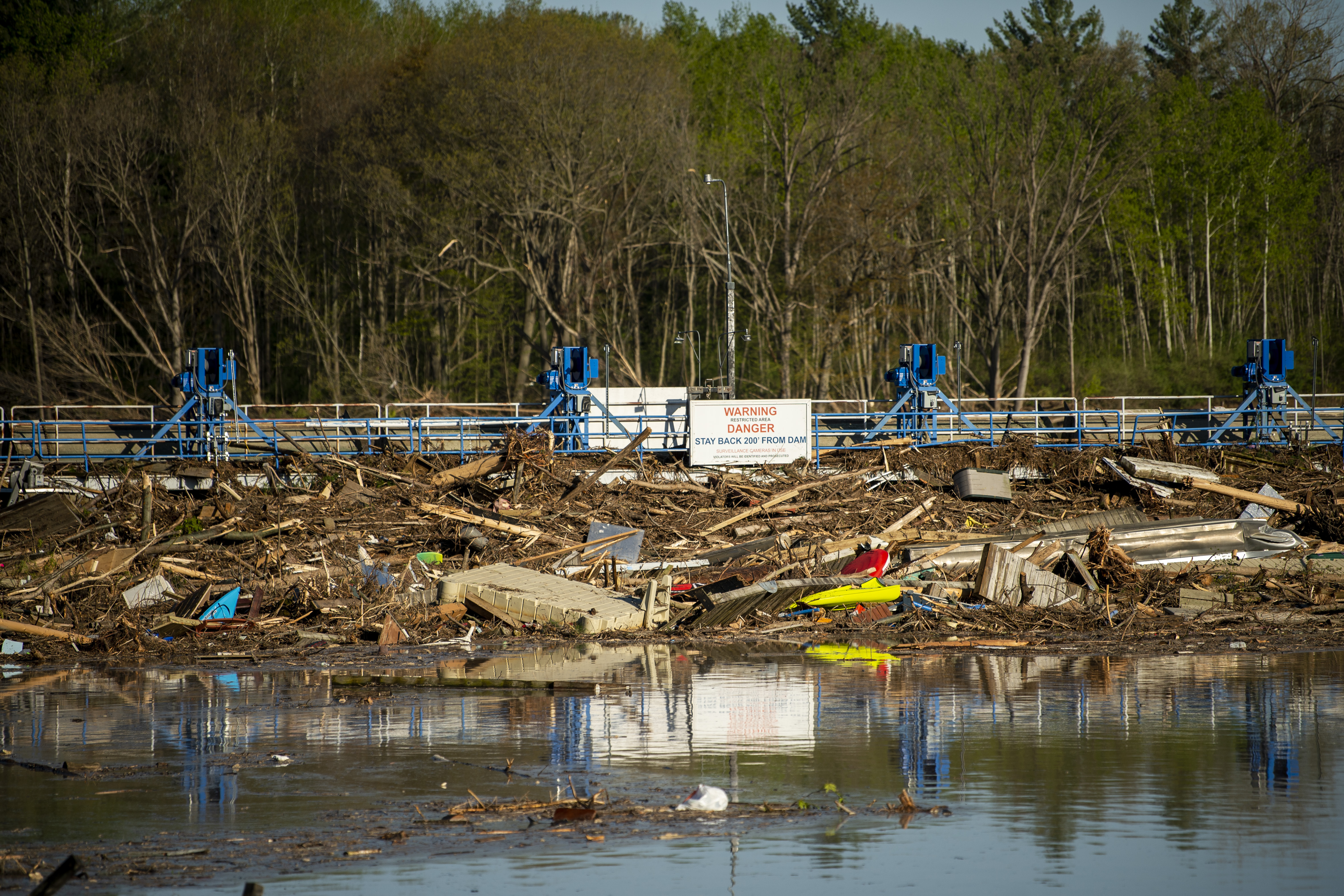
A lot of focus has been placed on Dow Chemical Company—which is headquartered in Midland, Michigan—after two dams breached and flooded many areas around Midland County including near a Superfund site.
Dow stated in a press release Thursday that there were “no reported product releases” and though the floodwaters entered an on-site brine pond used for groundwater remediation, “material from the brine pond does not create any risk to residents or the environment.”
But while there might not be new contamination issues to deal with, much of the progress on the cleanup of Dow’s last chemical contamination might be lost.
For years Dow dumped or incinerated wastes that contaminated the Tittabawassee and Saginaw rivers and Saginaw Bay with dioxins and other toxic compounds, resulting in the 50-mile stretch of watershed being placed on the list of EPA Superfund sites.
Cleanup has been underway since 2007.
“Probably all of that work was destroyed with these high flows, and the contamination that was there from the dioxins has probably been moved around either further downstream or out on the floodplains,” said Allen Burton, professor of environment and sustainability and of earth and environmental sciences at University of Michigan.
“It’s going to be challenging for Dow to go back in and essentially restart all that and rebuild the bank and find what the new hotpots are with the dioxins.”
It’s not just about Dow
Despite the focus on Dow and the Superfund site, the potential environmental impacts of the flood are wider ranging.
“It’s not just about Dow,” Burton said. “It’s about all the chemicals people keep in their garage getting washed out, gas stations that keep chemicals that might get washed out, wastewater plants with raw sewage that’s getting washed out.”
And all of it is getting washed out to Saginaw Bay and Lake Huron.
The city of Midland’s wastewater treatment plant has been dealing with “an ongoing sanitary sewer overflow event related to current flooding conditions,” according to a press release from the city. It’s expected to continue “until flooding conditions subside.”
Untreated sewage carries bacteria and viruses that can infect swimmers or get into drinking water sources.
As of 3 p.m. Friday, the water level of the Tittabawassee River was just over 25 feet, according to the National Weather Service. The flood stage is 24 feet.
The impact that this flooding in particular will have on the bay and the lake is unclear so far. The sheer volume of water will mean that any chemicals and sewage washed into the lake will be diluted, but it will also spread the contaminants out over a wider area, according to Burton.
“The state is going to be faced with needing to do a lot of sampling of soil and sediments downstream to figure out where any contamination will be,” he said. “It’s hard to say if it’s a public health or environmental threat until they do the sampling.”
Catch up on news from Great Lakes Now:
Flood raises fears of pollution at Michigan toxic waste site
Midland Flooding: Climate change and rains exacerbate dam infrastructure issues
Is America prepared to handle natural disasters during the COVID-19 pandemic?
Featured image: A look at the debris collected at the Sanford Dam on Wednesday, May 20, 2020. After the Edenville Dam failed and the Tittabawassee River flooded surrounding areas, many residents were urged to leave their homes and to brace themselves for the possibility of the Sanford Dam collapsing. Water flowed over the top of it through the night, but the structure is still in place. (Kaytie Boomer/The Bay City Times via AP)




